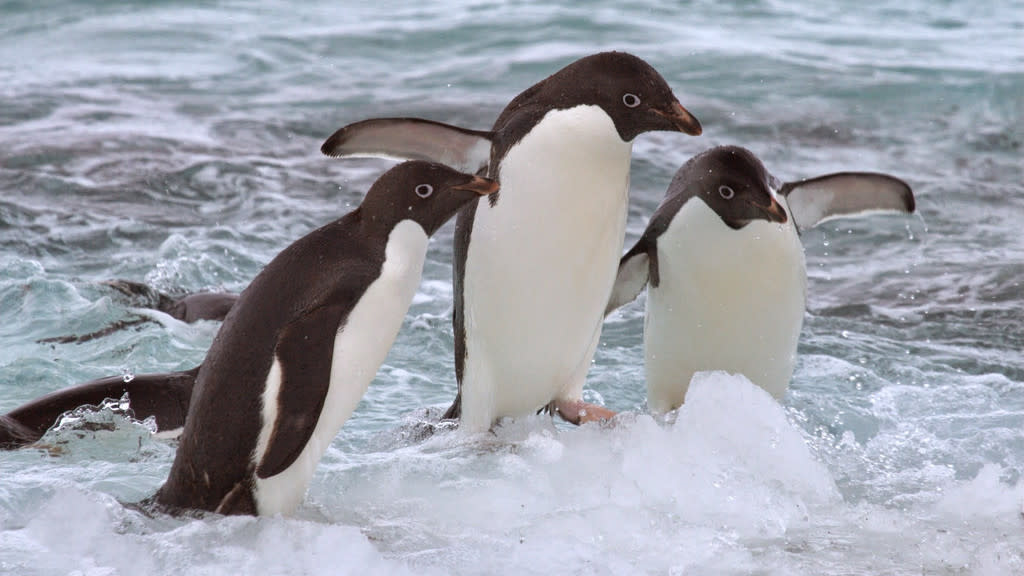Surfin' bird! Adélie penguins 'surf' on sea ice to help migration

Penguins 'surf' on sea ice to travel longer distances than they could by swimming, according to scientists.
The newly published research by the non-profit Point Blue Conservation Science shows how Adélie penguins within the Ross Sea, Antarctica use sea ice in their annual migrations.
The results were published in the journal Ecology, a publication of the Ecological Society of America. Adélie penguins, though flightless, can undertake extraordinary migrations travelling thousands of kilometers out to sea from their on-land breeding colonies in Antarctica, tracking daylight and food during the long Antarctic winter.
Other species are known to use wind or ocean currents to help them save energy as they travel but, until now, but the new research indicates Adélies 'surf' and use the movement of sea ice to support their travels.
Point Blue has studied Adélie penguins on Ross Island, Antarctica since 1996. Recent advances in the miniaturisation of electronic tags allowed researchers to track the winter movements of 87 individuals across 146 trips spanning 3 years Point Blue's Dennis Jongsomjit, lead author of the study noted that "Combining these new tracking tags with remotely sensed satellite data of sea-ice movement meant that we were able to investigate in greater detail than we've ever done before if and how Adélie penguins interacted with sea ice."
Point Blue found that Adélie penguins traveled greater distances when they received more support from the moving sea ice. However, sea ice can present a problem and slow them down if it is moving in the wrong direction. As ice drift speeds increased, penguins were found further north, and that variation and changes in the movement of sea ice may serve as a mechanism impacting adult survival and reproductive success, helping drive population trajectories on Ross Island.

 Yahoo News
Yahoo News 
